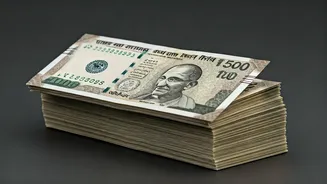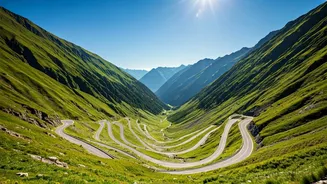The Recent Ranking
India's passport recently experienced a downturn in its global standing, now ranking 85th in terms of travel freedom. This position reflects a change from
previous years, indicating a decrease in the number of countries where Indian passport holders can travel without obtaining a visa beforehand. The shift underscores how the ability of Indian citizens to move internationally has been impacted, creating new hurdles and affecting travel plans. This change is crucial for understanding the current state of international mobility for Indian citizens.
Visa-Free Access Explained
A passport's 'power' essentially refers to how many countries a holder can visit without needing a visa. A high ranking implies greater visa-free access, simplifying travel and promoting global interaction. Conversely, a lower ranking means more visa requirements, increasing the paperwork and complexities for travel. This indicator is a key measure of a country's diplomatic relationships and the international perception of its citizens. The number of visa-free destinations provides a practical indication of how freely individuals can explore the world.
Impact on Travelers
The diminished passport ranking affects Indian travelers by making international trips more complicated. They may need to apply for visas more often, a process that can be both time-consuming and costly. This change affects both business travelers and tourists. Besides direct impact on travel plans, the lower ranking can also influence perceptions about India. It may have implications for business, education, and cultural exchange, as it makes mobility for Indian citizens more challenging compared to those with passports in higher-ranked countries.
Factors Behind the Drop
Several elements contributed to the decline in India's passport ranking. Global events, for example, have significantly influenced travel policies and diplomatic relations. These external factors had a notable effect on travel rules, influencing the need for visas and affecting the number of countries that offered visa-free or visa-on-arrival entry for Indian citizens. Changes in bilateral agreements and shifts in global politics also played a crucial role. These different aspects combine to paint a complex picture of why the Indian passport's power experienced a downturn and where it stands in today's world.
Comparative Global Analysis
Compared to other countries, the Indian passport now lags behind many others, especially in areas such as Europe and North America. Countries in these regions typically enjoy a higher ranking because they often have broader visa-free agreements and maintain stronger diplomatic ties. Comparing India's passport to those of other nations indicates a global landscape where diplomatic alliances and international relations hold significant importance. Such comparisons shed light on India's current standing, and they give a clearer picture of the different travel access across the globe.
Potential Solutions Explored
To boost its passport's ranking, India can undertake several steps. Strengthening diplomatic ties with more countries can lead to visa-free travel deals. Additionally, streamlining the visa application process for inbound travelers can improve international relations and boost the country's reputation. Actively participating in global forums and aligning travel regulations with international standards can also create opportunities to ease travel for Indian citizens. These actions are crucial in improving India's global standing and making international travel more accessible for its citizens, supporting both individual freedom and economic development.














